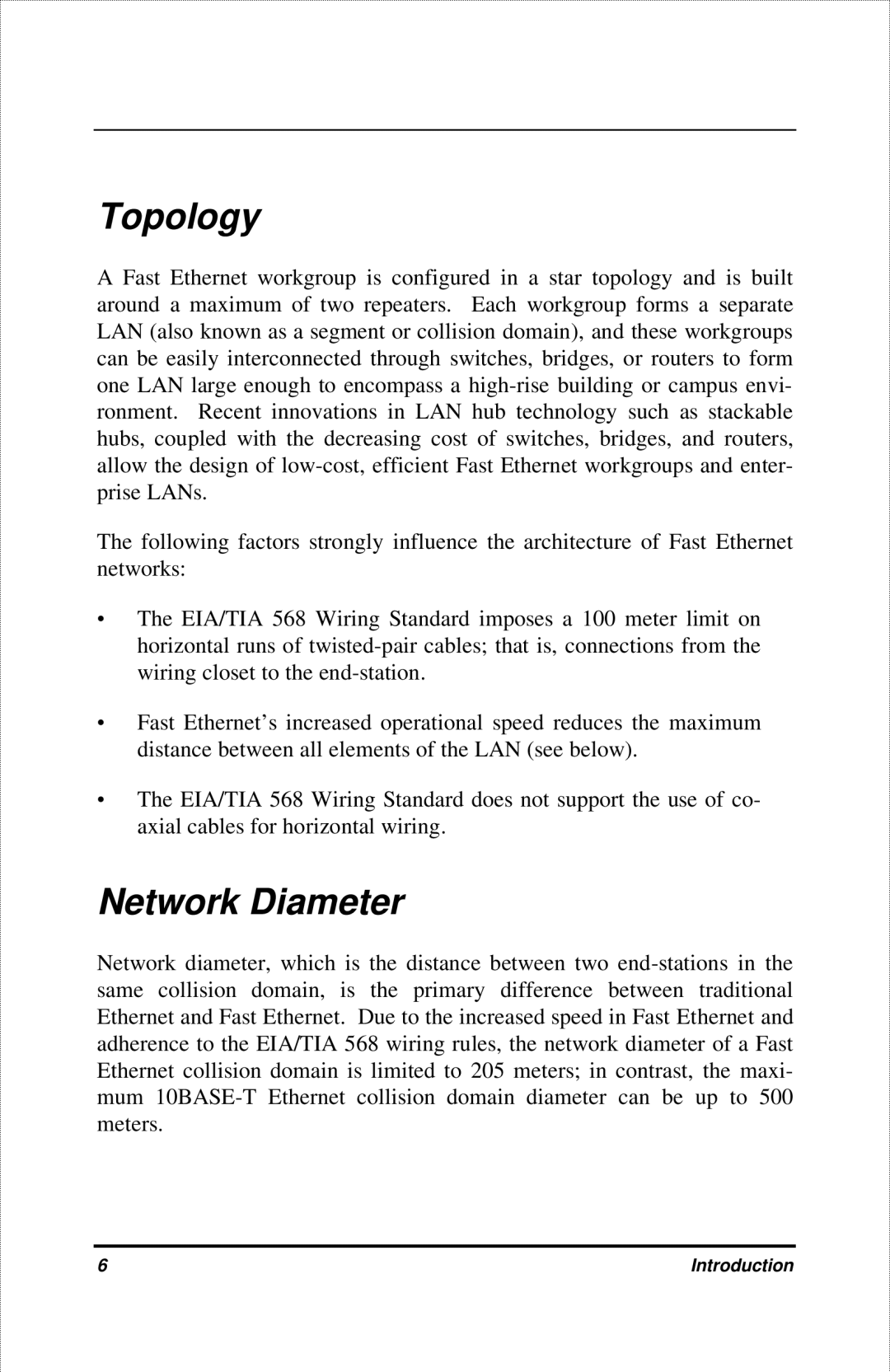
Topology
A Fast Ethernet workgroup is configured in a star topology and is built around a maximum of two repeaters. Each workgroup forms a separate LAN (also known as a segment or collision domain), and these workgroups can be easily interconnected through switches, bridges, or routers to form one LAN large enough to encompass a
The following factors strongly influence the architecture of Fast Ethernet networks:
∙The EIA/TIA 568 Wiring Standard imposes a 100 meter limit on horizontal runs of
∙Fast Ethernet’s increased operational speed reduces the maximum distance between all elements of the LAN (see below).
∙The EIA/TIA 568 Wiring Standard does not support the use of co- axial cables for horizontal wiring.
Network Diameter
Network diameter, which is the distance between two
6 | Introduction |
